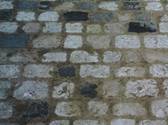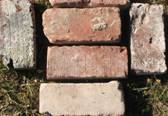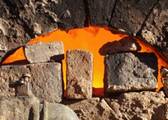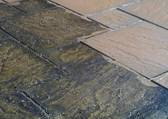Restoring Antique Pavers
Antique Pavers Are Usually Between 80 to 100 Years Old
 Original antique pavers are salvaged pavers from previous paved community/commercial roads, sidewalks and demolished buildings. They are usually between 80 to 100 years old with great environmental values where millions of tones of antique pavers are recycled and restored hence do not end up in land fills. The unique character of antique pavers will add natural old world beauty and charm for various applications such as walkways, sidewalks, patios and any external area where pavers are required. Another great benefit is no two antique pavers are exactly the same in texture with continuous long lasting durability and performance characteristics.
Original antique pavers are salvaged pavers from previous paved community/commercial roads, sidewalks and demolished buildings. They are usually between 80 to 100 years old with great environmental values where millions of tones of antique pavers are recycled and restored hence do not end up in land fills. The unique character of antique pavers will add natural old world beauty and charm for various applications such as walkways, sidewalks, patios and any external area where pavers are required. Another great benefit is no two antique pavers are exactly the same in texture with continuous long lasting durability and performance characteristics.
Another way that antique pavers are made is by manufacturing a replica of such pavers with special machines that were used over 50 years ago. The cost benefit of man made antique pavers is they cost a lot less than original antique pavers but still have the same rugged appearance and surface effect/ texture of original antique pavers.
Techniques And Processes For Restoring Antique Pavers
 One of the key techniques in restoring antique pavers is the cleaning process that makes them look like new again. Decades and decades of surface wear and tear, stains and debris build up on the surface of each paver and must be carefully removed. The paver joint materials that would have been used over 80 years ago are cement based materials where as modern times, sand is the more common material used to fill gap joints. Restoring antique pavers is a long process if you intend on carrying out the project yourself but if your willing to proceed here are some handy tips on restoring antique pavers yourself;
One of the key techniques in restoring antique pavers is the cleaning process that makes them look like new again. Decades and decades of surface wear and tear, stains and debris build up on the surface of each paver and must be carefully removed. The paver joint materials that would have been used over 80 years ago are cement based materials where as modern times, sand is the more common material used to fill gap joints. Restoring antique pavers is a long process if you intend on carrying out the project yourself but if your willing to proceed here are some handy tips on restoring antique pavers yourself;
- With a water blast device, wash down each paver thoroughly
- Using a hammer and chisel, remove any cement based excess material around all of the paver as well as the surface
- Use the water blaster again after all of the material have been chiselled then wash down again thoroughly
- To bring the natural texture of the antique paver, use a grinder and lightly grind the paver surface a few millimetres
- Once the paver texture is apparent, water blast and wash down each paver
- Leave pavers aside to dry out properly and use when required
Rejuvenate The Natural Texture Surface And Appearance
The idea of restoring antique pavers that were used on roads and pathways from decades ago is to rejuvenate the dull surface. This was due to wear and tear from foot and vehicle traffic and over exposure to weather conditions. Restoring the pavers brings out the true natural texture of the original natural stone surface. The pavers that were made in that era were all made from natural stone such as; limestone, granite and sandstone. Although in time all natural stone materials will age gracefully, the surface will always be affected from various elements and become dull.
What Extra Process Do Antique Manufacturers Do That You Can’t
 Professional antique paver restoration processes and restoration manufacturers use a firing technique. The manufacturing process of restoring antique pavers also includes the cleaning, the water blasting, and the grinding process, with the added process of re-firing the pavers in a kiln at extreme high temperatures. The firing process actually brings out more rustic textures that naturally exist in the natural stone.
Professional antique paver restoration processes and restoration manufacturers use a firing technique. The manufacturing process of restoring antique pavers also includes the cleaning, the water blasting, and the grinding process, with the added process of re-firing the pavers in a kiln at extreme high temperatures. The firing process actually brings out more rustic textures that naturally exist in the natural stone.
Final Sealing Process To Antique Pavers
 The benefit of sealing antique pavers after installation is to ultimately provide the surface with added protection from various natural and non-natural elements. Other advantages to sealing antique pavers after the restoration process are that the surface texture is locked in and will not fade. The textures of pavers are more vibrant and the pavement application will be slip and stain resistant.
The benefit of sealing antique pavers after installation is to ultimately provide the surface with added protection from various natural and non-natural elements. Other advantages to sealing antique pavers after the restoration process are that the surface texture is locked in and will not fade. The textures of pavers are more vibrant and the pavement application will be slip and stain resistant.





